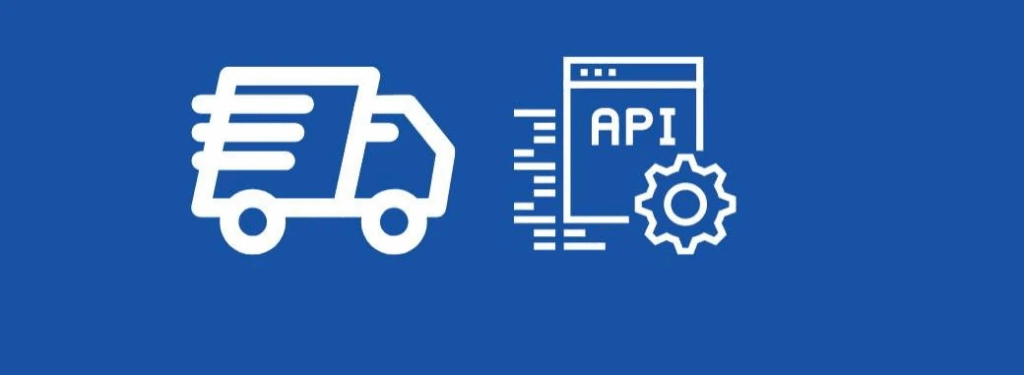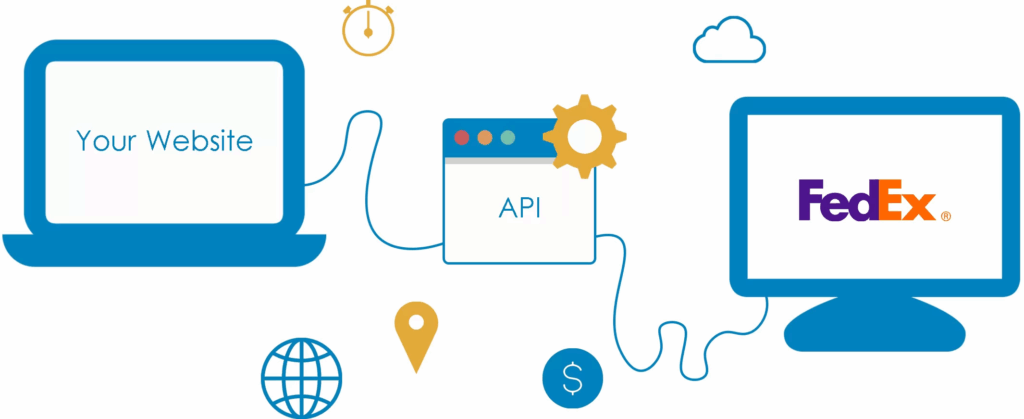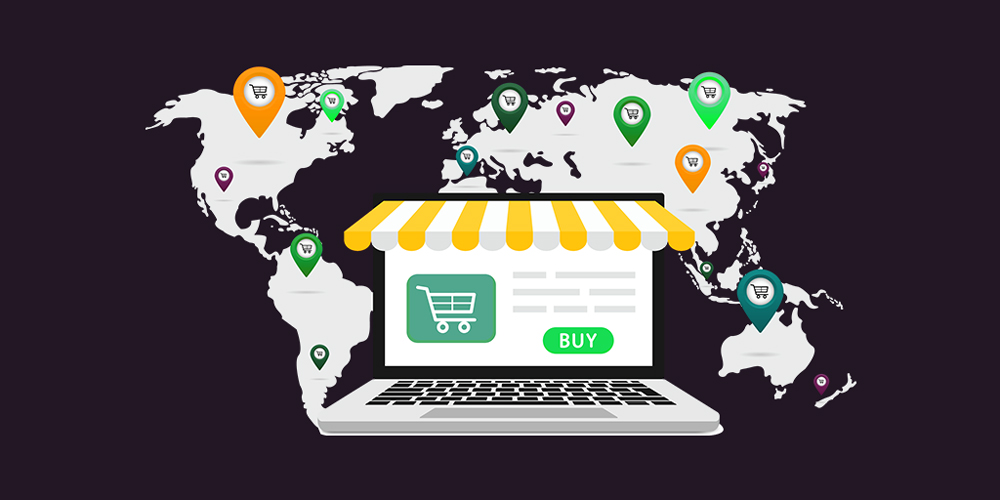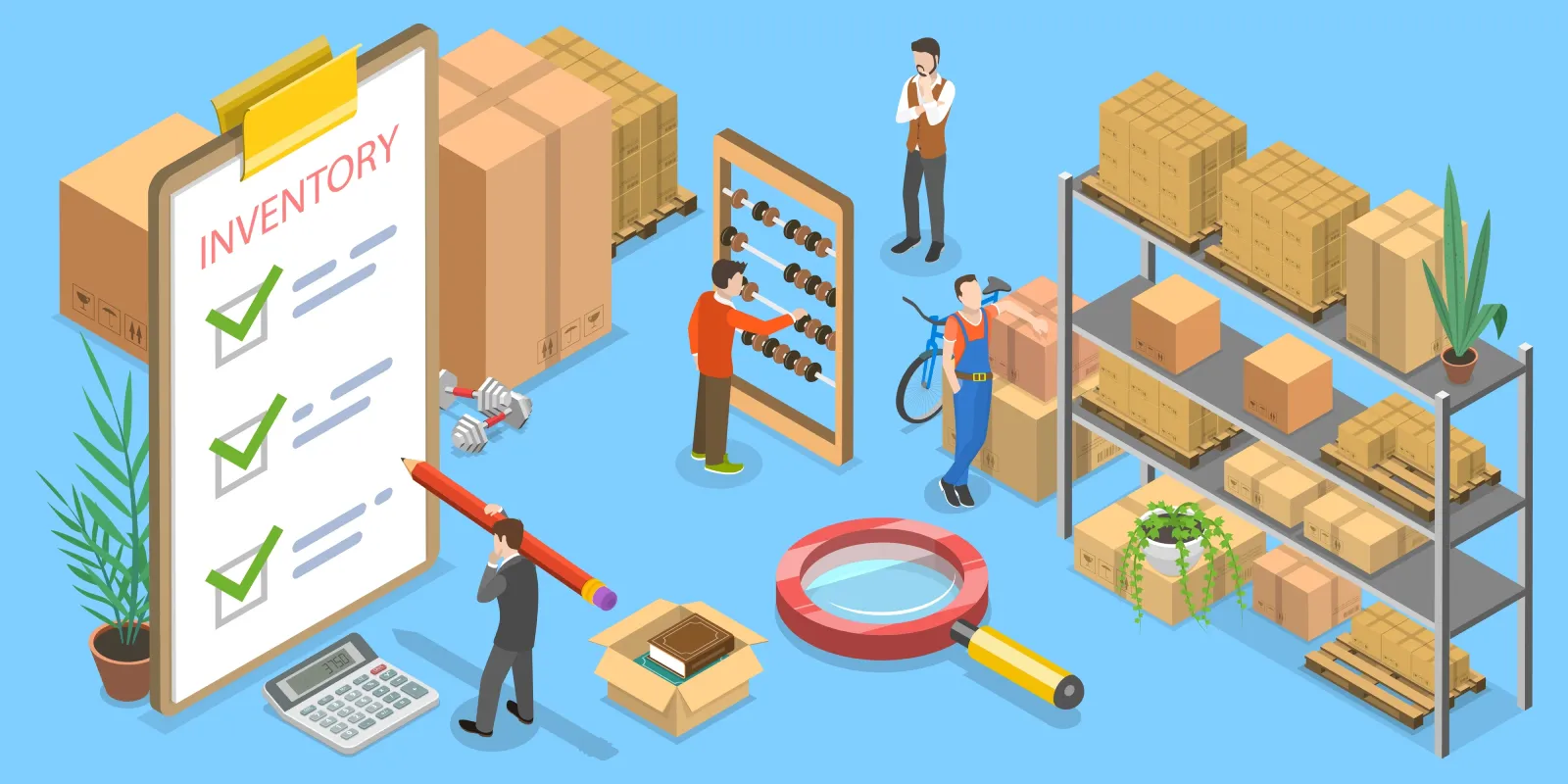Augmenter les profits du commerce électronique par 30% avec l'intégration de l'API d'expédition - voici comment
Visitez Postalparcel pour des solutions avancées d'intégration d'API pour l'expédition..
Le succès du commerce électronique dépend de la rapidité de la livraison, de la précision du suivi et de la rentabilité. L'un des moyens les plus efficaces d'y parvenir consiste à Intégration de l'API pour l'expédition - un système qui relie directement votre boutique en ligne aux transporteurs. Il automatise la création d'étiquettes, la comparaison des tarifs et le suivi des livraisons, ce qui permet aux entreprises d'augmenter leurs bénéfices jusqu'à 30%.

Qu'est-ce que l'intégration des services d'expédition par API ?
Comprendre les bases
Un API (Interface de programmation d'applications) permet à deux systèmes, tels que votre boutique de commerce électronique et un transporteur, d'échanger des données automatiquement. Au lieu d'exporter manuellement les détails de la commande ou de se connecter aux sites web des transporteurs, l'intégration API de l'expédition effectue ces actions instantanément et avec précision.
Lorsqu'il est mis en œuvre correctement, il peut le faire :
- Générer automatiquement les étiquettes d'expédition dès qu'une commande est passée
- Afficher les tarifs d'expédition en temps réel au moment du paiement
- Envoyer des mises à jour de suivi directement aux clients
- Synchroniser l'état des commandes et les informations d'expédition avec le backend de votre magasin
Par essence, il supprime les étapes manuelles qui sont souvent à l'origine d'erreurs et de retards, ce qui rend l'exécution transparente et évolutive.
Comment il s'intègre dans le commerce électronique moderne

Les plateformes de commerce électronique telles que Shopify, WooCommerce, Magento et BigCommerce prennent déjà en charge les intégrations API pour l'expédition. Ces systèmes fonctionnent en coulisses pour connecter votre boutique à des services de messagerie tels que FedExDHL, UPS ou USPSLe système de gestion des commandes permet d'assurer que chaque commande est traitée automatiquement, sans intervention humaine.
Il en résulte une expédition plus rapide, une réduction des erreurs humaines et une amélioration de la transparence - trois piliers d'une opération de commerce électronique réussie.
Pourquoi l'intégration de l'API d'expédition est-elle importante pour la croissance du commerce électronique ?
1. Élimination du travail manuel et des erreurs humaines
L'exécution manuelle des commandes prend du temps et est sujette à des erreurs. Les adresses erronées, les commandes perdues et les options d'expédition incorrectes entraînent des coûts inutiles et des clients frustrés.
L'intégration de l'expédition par API résout ces problèmes en automatisant le flux de travail :
- Les données relatives aux commandes sont transmises directement de votre magasin au transporteur.
- Les étiquettes sont générées instantanément
- Les liens de suivi sont partagés automatiquement avec les acheteurs
Ce processus permet de gagner plusieurs minutes par commande. Pour une entreprise qui expédie des centaines de colis par jour, cela se traduit par des heures économisées - et une réduction significative des coûts de main-d'œuvre.
2. Réduction des coûts opérationnels
L'efficacité opérationnelle est le fondement de la rentabilité. Avec un système d'expédition API, vous pouvez :
- Comparer les tarifs des opérateurs en direct pour trouver le mode de livraison le plus économique ou le plus rapide
- Impression par lots des centaines d'étiquettes à la fois
- Acheminement des envois en fonction de la proximité de l'entrepôt ou de la disponibilité des stocks

Au fil du temps, ces optimisations se traduisent par des économies régulières, qui peuvent accroître vos marges bénéficiaires de plusieurs façons. jusqu'à 30%.
3. Améliore la précision et la rapidité des commandes
En éliminant la saisie manuelle, l'expédition par API garantit que les données du client sont transférées exactement telles qu'elles ont été saisies au moment du paiement. Elle évite les doublons, les erreurs d'affranchissement et les articles égarés. Un traitement des commandes plus rapide et plus précis vous permet de maintenir une exécution régulière, même pendant les périodes de forte demande telles que le Black Friday ou les fêtes de fin d'année.
Comment l'intégration des API d'expédition améliore-t-elle l'expérience des clients ?
Suivi en temps réel Renforcer la transparence et la confiance
Les clients souhaitent avoir une visibilité à chaque étape de leur commande. Grâce à l'intégration de l'API, ils reçoivent des notifications de suivi automatisées dès que leur commande est expédiée. Cette transparence réduit l'anxiété et renforce la confiance.
Les avantages sont les suivants :
- Moins de demandes de renseignements de la part du service clientèle sur l'état de l'expédition
- Une plus grande satisfaction et un meilleur engagement après l'achat
- Augmentation des taux d'achats répétés et des commentaires positifs
Une exécution plus rapide permet de fidéliser les clients
Un flux de travail piloté par l'API élimine le délai entre la passation de la commande et la création de l'expédition. Les transporteurs reçoivent instantanément les données de la commande, ce qui rend la livraison le jour même ou le lendemain plus réalisable.
Plus les clients reçoivent leurs produits rapidement, plus ils sont susceptibles de renouveler leurs achats. La rapidité influence également le marketing de bouche à oreille : les clients satisfaits sont plus susceptibles de recommander votre marque à d'autres personnes.
Une expérience multicanal transparente
Si vous vendez sur plusieurs canaux (comme Amazon, Etsy et votre propre site web), l'intégration de l'API d'expédition garantit que toutes les données d'expédition sont centralisées. Vous pouvez suivre toutes les commandes à partir d'un seul tableau de bord, ce qui vous évite de passer d'une plateforme à l'autre. Cette expérience unifiée profite à la fois à votre équipe opérationnelle et à vos clients.
Quelles sont les principales caractéristiques d'une intégration API performante en matière d'expédition ?
1. Support multi-transporteurs et multi-régions

Une intégration API robuste permet de se connecter aux transporteurs mondiaux, notamment DHL, FedEx, UPS et USPSainsi que des partenaires régionaux. Il vous permet d'adapter les options d'expédition aux différents sites, garantissant ainsi une livraison dans les délais, quelle que soit la distance.
2. Tarifs d'expédition et taxes en temps réel
Les systèmes API récupèrent les frais d'expédition et les calculs de taxes directement auprès des transporteurs, ce qui permet d'afficher les frais exacts au moment du paiement. Cette transparence permet d'éviter de sous-facturer les clients et de prévenir les pertes inattendues.
3. Génération automatisée d'étiquettes
Les étiquettes sont créées instantanément à partir des données relatives aux clients et aux produits. Il n'est plus nécessaire de saisir les adresses manuellement ou de télécharger des feuilles de calcul : un simple clic suffit pour obtenir des étiquettes prêtes à être imprimées.
4. Intégration du suivi de bout en bout
Le parcours de chaque envoi est enregistré en temps réel. Vous et vos clients pouvez consulter les mises à jour telles que "en transit", "en cours de livraison" ou "livré" directement à partir de votre tableau de bord de commerce électronique.
5. Compatibilité avec les principales plateformes
La plupart des systèmes de commerce électronique prennent en charge des intégrations ou des plugins prédéfinis. Cela signifie que vous pouvez déployer une solution API sans embaucher de développeurs ou écrire un code complexe.
Comment l'intégration de l'API d'expédition peut-elle augmenter les profits par 30% ?
1. Les gains de temps se transforment en gains financiers
En supprimant les tâches répétitives, vous réduisez les heures de travail. Un magasin traitant 500 commandes par jour peut économiser 25 à 30 heures de travail par semaine grâce à l'automatisation. Cela équivaut à l'embauche d'un employé supplémentaire - sans payer de salaire supplémentaire.
2. La réduction des erreurs améliore les marges

Les expéditions incorrectes entraînent des remboursements, des réexpéditions et des frais de port inutiles. L'intégration API élimine ces erreurs coûteuses en garantissant que toutes les données proviennent directement de sources vérifiées.
3. Accès à des tarifs d'expédition réduits
De nombreuses API permettent d'accéder à des remises sur les transporteurs ou à des prix négociés pour les envois en nombre. Cela peut réduire les coûts de 10-20%, ce qui vous permet de réinvestir les économies réalisées dans le marketing ou les stocks.
4. Un meilleur suivi signifie moins de litiges
Lorsque les clients peuvent suivre l'évolution de la livraison, ils sont moins susceptibles de déposer des réclamations ou des demandes de remboursement. Cela permet de préserver directement des recettes qui pourraient autrement être perdues.
5. La fidélisation des clients augmente la valeur à vie
La fluidité de l'expédition est un facteur déterminant dans le retour des clients. Les clients satisfaits ne se contentent pas de renouveler leurs achats, ils deviennent également des défenseurs de votre marque, ce qui favorise la croissance organique.
Les défis les plus courants et la manière de les résoudre
1. Processus d'installation complexe
Certains commerçants hésitent à intégrer API parce qu'ils craignent la complexité technique. Des solutions comme Colis postal fournissent des outils prêts à l'emploi qui ne nécessitent aucun codage et peuvent être mis en œuvre en quelques heures.
2. Synchronisation des données et conflits de systèmes
Si les numéros de suivi ou les statuts de livraison ne sont pas mis à jour, cela est généralement dû à des clés API obsolètes ou à des incompatibilités de système. Le fait de maintenir vos intégrations et vos versions logicielles à jour permet de résoudre facilement ce problème.
3. La mise à l'échelle transfrontalière
Le commerce électronique mondial exige la gestion des douanes, des droits de douane et la prise en charge de plusieurs langues. L'API de Postalparcel gère automatiquement la documentation douanière et la localisation, ce qui simplifie la logistique transfrontalière.
Ce qu'il faut savoir pour choisir un partenaire d'expédition API

- Soutien aux transporteurs dans le monde entier - Assurer la couverture des marchés nationaux et internationaux.
- Flux de travail personnalisables - Possibilité de définir des règles d'expédition, des priorités pour les transporteurs et des notifications personnalisées.
- Documentation complète - L'installation conviviale pour les développeurs et l'assistance technique sont essentielles.
- Une tarification transparente - Évitez les frais cachés par étiquette ou par envoi ; optez pour une tarification prévisible.
- Un soutien solide à la clientèle - Recherchez des fournisseurs qui offrent une assistance 24 heures sur 24 et 7 jours sur 7 et une aide à l'intégration.
Comment mettre en œuvre l'intégration de l'API d'expédition, étape par étape
- Évaluez vos besoins - Identifiez les goulets d'étranglement dans votre processus d'expédition actuel.
- Choisir un partenaire API - Comparez les fonctions d'intégration, l'assistance des opérateurs et les modèles de tarification.
- Connecter votre magasin - Utilisez vos clés API ou vos plugins pour intégrer vos systèmes de commerce électronique et de transporteur.
- Envois de tests - Effectuer des commandes d'essai pour s'assurer de la bonne synchronisation des étiquettes, du suivi et des coûts.
- Former votre équipe - Veiller à ce que le personnel comprenne le nouveau système pour qu'il soit adopté sans heurts.
- Contrôler et optimiser - Suivez les indicateurs clés, notamment la vitesse d'expédition, la satisfaction des clients et le coût par commande.
L'avenir de l'exécution des commandes pour le commerce électronique
L'intégration des API d'expédition représente le passage à une logistique intelligente, basée sur les données. Les entreprises qui automatisent maintenant auront un avantage concurrentiel - des livraisons plus rapides, des coûts moins élevés et une plus grande fidélité de la clientèle.
À mesure que le commerce électronique se développe à l'échelle mondiale, il devient essentiel de pouvoir gérer des milliers d'envois dans plusieurs régions. L'expédition par API vous permet de faire évoluer vos opérations sans accroître la complexité ou les frais généraux.
Conclusion : L'intégration de l'API d'expédition comme moteur de croissance
L'intégration de l'API Shipping est plus qu'une commodité - c'est un multiplicateur de profit. Elle permet aux boutiques de commerce électronique d'automatiser les processus, de réduire les coûts et d'offrir une meilleure expérience d'achat. En utilisant des solutions telles que Colis postalVous pouvez tout gérer, de la création d'étiquettes au suivi des livraisons, avec précision et rapidité.
Pour les marques de commerce électronique en pleine croissance, cette technologie n'est pas facultative - elle est essentielle pour rester compétitif et rentable en 2025 et au-delà.
Aperçu de l'industrie
nouvelles via la boîte de réception
Nulla turp dis cursus. Integer liberos euismod pretium faucibua








